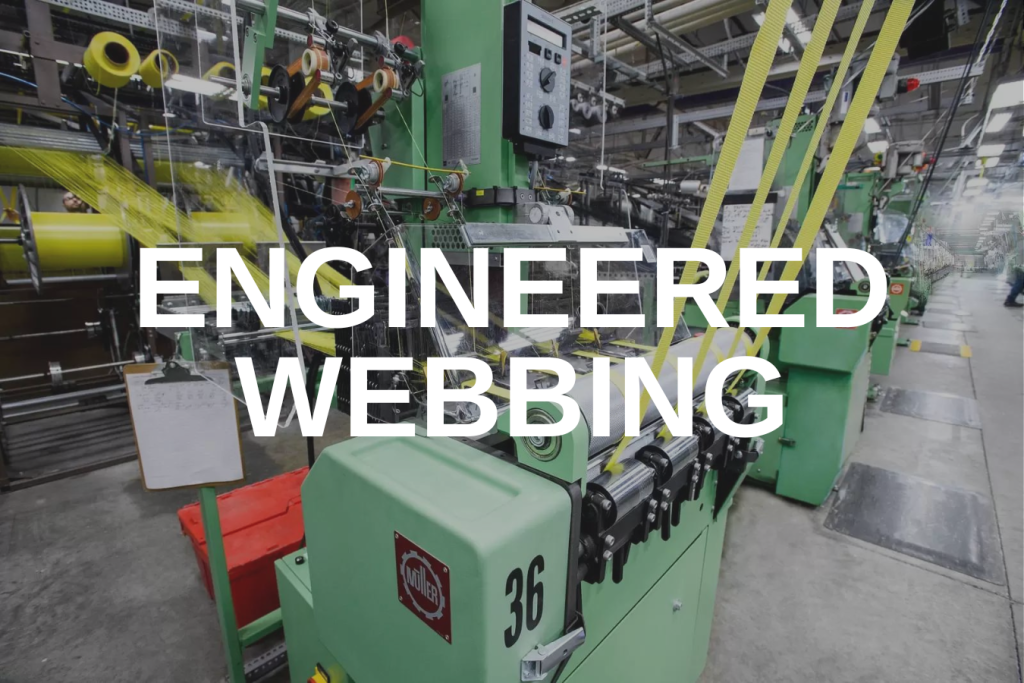With technology constantly changing and improving, it can be challenging to identify which type of industrial fiber is best suited for particular projects. At Sturges Manufacturing, we pride ourselves on our extensive knowledge of materials as well as the different characteristics and benefits of each type of webbing yarn.
To give you confidence in making the right decision, this article will provide an overview of Kevlar®, Vectran®, Nomex®, and UHMWPE (Ultra-High Molecular Weight Polyethylene). Our extensive experience using these materials every day has given us a deep understanding of their unique properties and strengths.
We’ll examine how each type of yarn offers unique qualities depending on the application or industry, with considerations such as weight, strength, creep, heat resistance, and abrasion resistance. This analysis should provide OEMs with the knowledge they need when choosing among these different types of yarns for their webbing application.
Kevlar® Fiber
Kevlar® is a synthetic fiber first developed by DuPont in the 1960s. It is incredibly strong and lightweight. Kevlar® is known for its high-tenacity and tensile strength , making it ideal for use in products like protective gear.
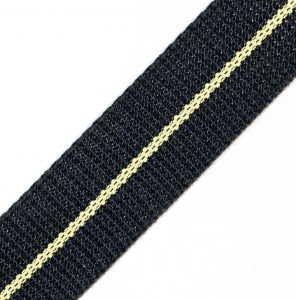
One of Kevlar®’s major benefits is its ability to withstand extreme temperatures. It decomposes at around 480°C (900°F), which means it can be used in high-temperature applications without degrading. This is why Kevlar is one of the most popular fibers for the firefighting industry.
Despite its many benefits, Kevlar® does have some drawbacks. One of the main issues is that it is vulnerable to UV radiation, which can cause it to degrade over time. This means it may not be suitable for outdoor applications where it is exposed to sunlight for extended periods of time. To address this issue, manufacturers can add UV stabilizers to Kevlar® or incorporate it into composite materials that provide UV protection.
Additionally, Kevlar® is not as flexible as some other materials, and its stiffness can limit its usefulness in certain applications where flexibility is essential. Kevlar® can be blended with other materials to improve its flexibility, making it more suitable for applications that require a high degree of flexibility.
Vectran® Fiber
Vectran® is a high-performance fiber known for its strength, abrasion resistance, and low stretch. It was first developed by Kuraray Co., Ltd. in Japan in the 1980s, and has since become a popular choice for a wide range of applications.
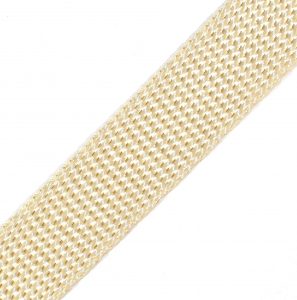 Vectran® boasts a high strength-to-weight ratio, making it stronger than Kevlar® while still being lightweight. Its higher modulus of elasticity means that it is less prone to stretching even under heavy loads. Furthermore, Vectran® exhibits excellent resistance to both abrasion and chemicals, making it an ideal choice for use in harsh environments where durability is a top priority.
Vectran® boasts a high strength-to-weight ratio, making it stronger than Kevlar® while still being lightweight. Its higher modulus of elasticity means that it is less prone to stretching even under heavy loads. Furthermore, Vectran® exhibits excellent resistance to both abrasion and chemicals, making it an ideal choice for use in harsh environments where durability is a top priority.
Another benefit of Vectran® fibers is its low creep, which means it will maintain its strength over time. This is why the yarn is often used in products in the fall protection industry, where it needs to withstand heavy loads over long periods of time.
Although Vectran® has numerous benefits, heat resistance is not one of those, with its melting point of approximately 330°C (625°F).
Nomex® Fiber
Nomex® is a high-temperature resistant meta-aramid fiber and, like Kevlar®, it was first developed by DuPont in the 1960s. It is known for its excellent thermal stability and flame resistance, making it a popular choice in products like firefighter gear and electrical insulation.
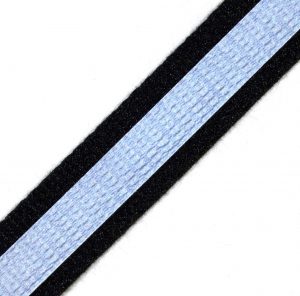 Nomex® offers several significant benefits, including its exceptional ability to withstand extreme temperatures. Since it carbonizes at approximately 420°C (800°F), Nomex® is a great option for high-temperature applications where other materials might fail.
Nomex® offers several significant benefits, including its exceptional ability to withstand extreme temperatures. Since it carbonizes at approximately 420°C (800°F), Nomex® is a great option for high-temperature applications where other materials might fail.
It also has excellent flame-resistant properties. Its ability to withstand high temperatures without igniting or melting provides an additional layer of protection for those who work in hazardous environments. The material’s flame resistance is achieved through a combination of its chemical structure and the formation of an insulating char layer when exposed to flames, which helps prevent further spread of the flame.
Moreover, Nomex® is lightweight, and has good abrasion resistance, an ideal component in products that require durability and reliability.
Nomex® is also a good option for electrical insulation applications. It is highly resistant to electrical arcs and sparks.
Despite its many benefits, Nomex® does have some limitations that can restrict its usefulness in certain applications. One of the main drawbacks of Nomex® is its lower strength compared to some of the other yarns, such as Kevlar® and UHMWPE. However, it is essential to note that Nomex® was not designed to be a high-strength material but to offer exceptional thermal and flame-resistant properties.
UHMWPE Fiber
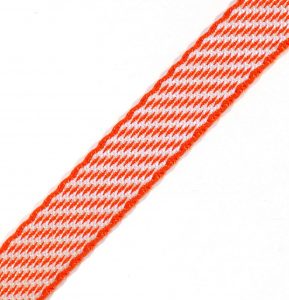 The high strength-to-weight ratio of UHMWPE is one of its major advantages. It is stronger than steel, yet much lighter, making it ideal for use in the fall protection industry. UHMWPE is also highly resistant to abrasion and chemicals.
The high strength-to-weight ratio of UHMWPE is one of its major advantages. It is stronger than steel, yet much lighter, making it ideal for use in the fall protection industry. UHMWPE is also highly resistant to abrasion and chemicals.
Another benefit of UHMWPE is its low stretch, which means it will maintain its strength over time. This makes it a common choice for use in products like ropes and cables, considering their need to be able to withstand heavy loads over extended periods of time. Additionally, although it can withstand temperatures of up to 150°C (302°F), UHMWPE is not as heat resistant as materials like Nomex® or Kevlar®, which have much higher melting points.
Sturges Provides Custom Webbing Solutions to Established OEMs By Weaving Industrial Fibers
At Sturges Manufacturing, we have extensive experience working with Kevlar®, Vectran®, Nomex®, and UHMWPE to provide performance custom webbing solutions to established OEMs.
As stated above, each of these materials has its own unique strengths and weaknesses, and it is important to choose the right material for the application at hand. Our experts are here to help you navigate through what webbing yarns work best according to your specific application. With a wide variety of services, from prototype design to custom sewing and testing, we can build a product suited to each customer’s expectations.
If you have any questions about these materials or would like to discuss your specific needs, please don’t hesitate to contact us. We’re always happy to share our expertise and help you find the right solution for your needs.

